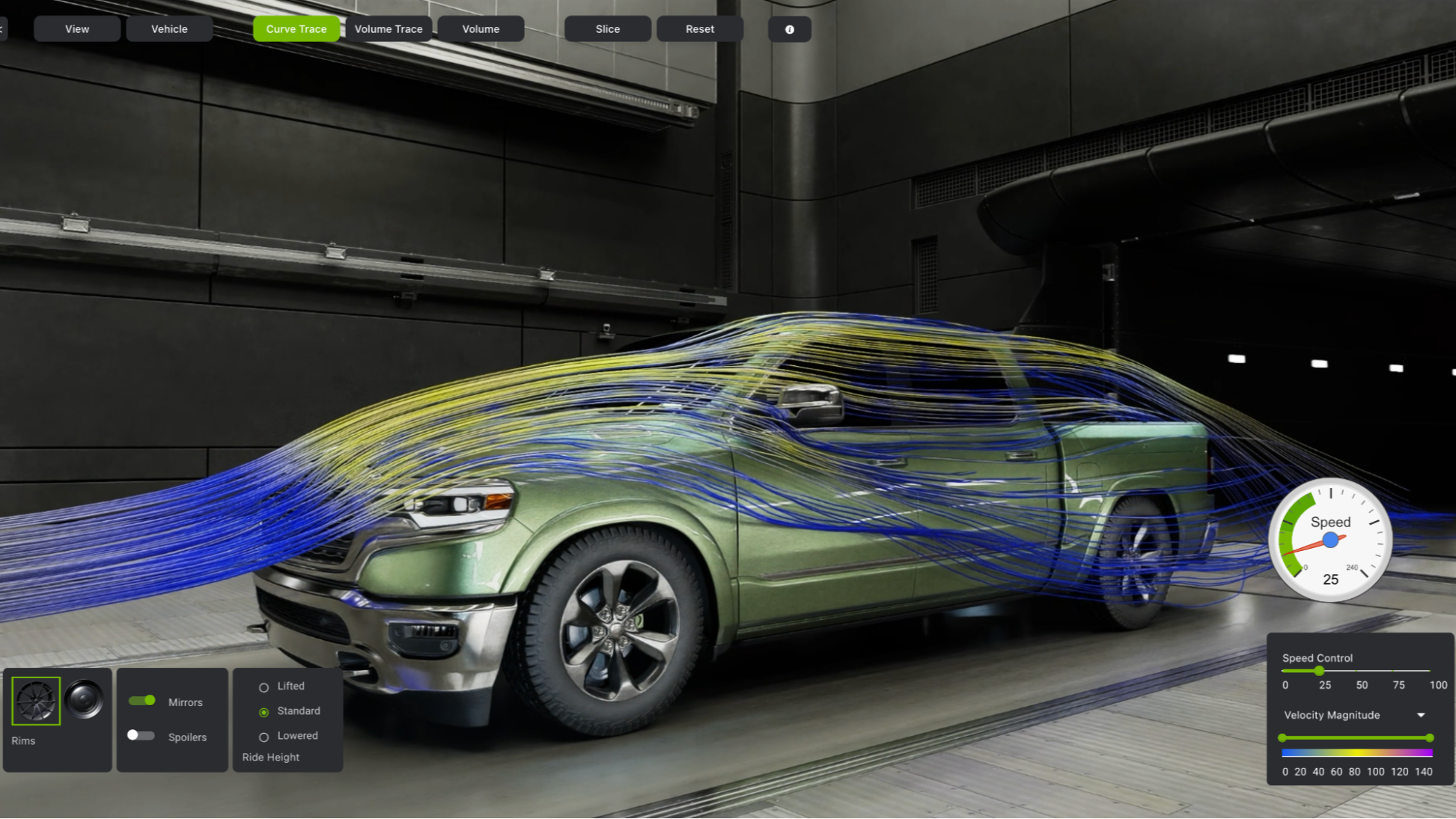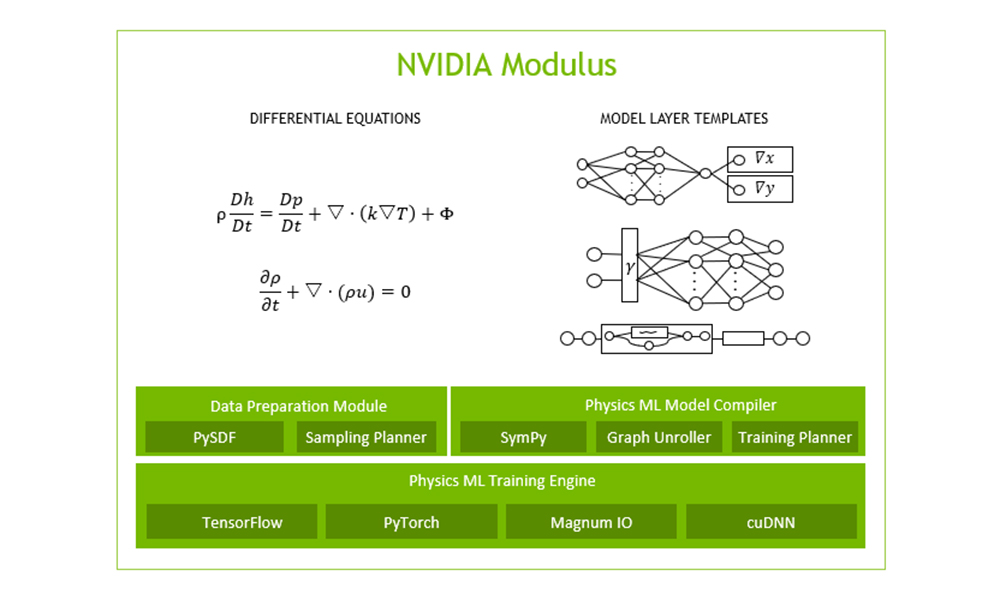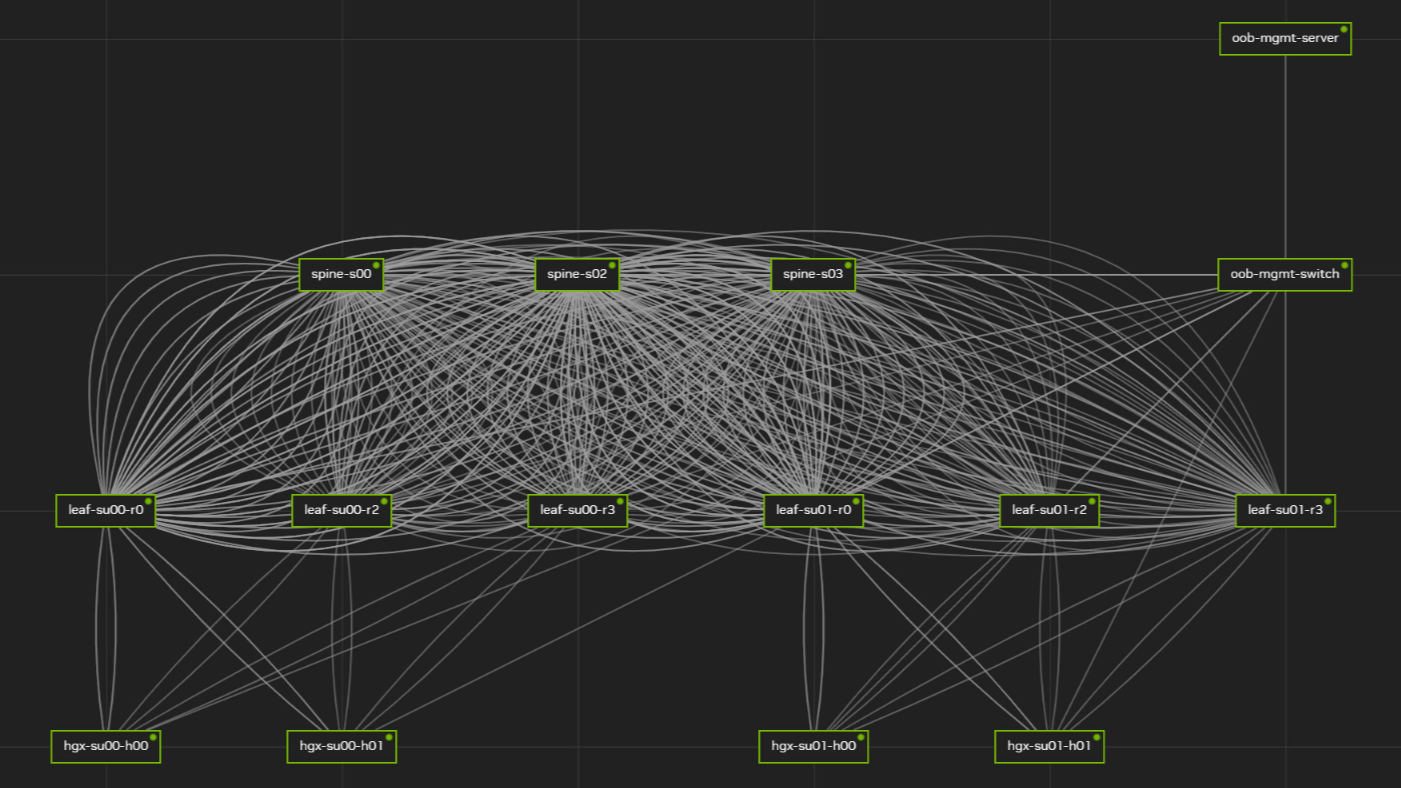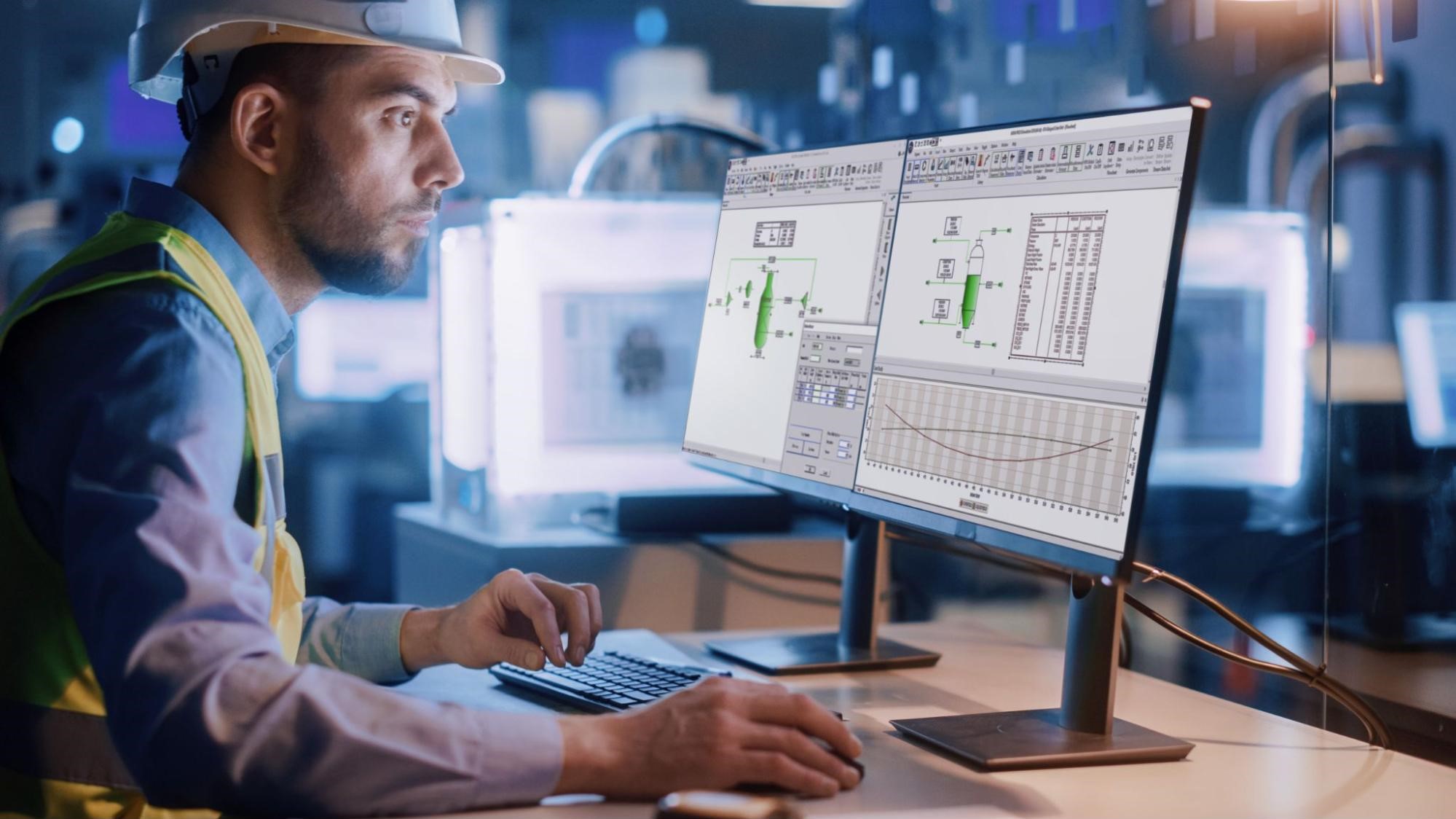An open ecosystem for physics-informed machine learning (physics-ML) fosters innovation and AI engineering applications. Physics-ML embeds into the learning process the knowledge of physical laws that govern a given dataset. This enables scientists to use prior knowledge to help train a neural network, making it more generalizable and efficient.
Yet, as physics-ML is a growing field of research, domain experts require a better starting point to understand how it applies to their real-world use cases. NVIDIA Modulus, an open-source framework for building, training, and fine-tuning physics-ML models with a simple Python interface, provides reference applications to address this need.
The Digital Twin team at HP 3D Printing Software Organization, for example, has developed innovative physics-ML models for their manufacturing digital twin, and has contributed this work to Modulus. HP 3D Printing is a leader in additive manufacturing and has a portfolio of manufacturing systems covering both polymer printing and metal printing.
This post highlights the work of the HP’s Digital Twin team in actively developing digital twin technology for its manufacturing systems to accelerate onboarding new applications, and adopting this technology in the production environment. The HP Digital Twin team found NVIDIA Modulus to be an ideal open innovation platform for contributing their work to support and collaborate with the broader manufacturing community.
“Our team has been developing physics simulation engines based on first principles,” said Dr. Jun Zeng, HP’s distinguished technologist heading the Digital Twin effort with HP’s 3D Printing Software Organization.
“We bring experimental sensing and metrology data to calibrate these physics simulation engines so that they are grounded by the manufacturing process variability. With physics-ML, once well trained, we see orders-of-magnitude speedups, and the model can run on your laptop. Such near real-time prediction delivered by physics-ML opens doors for many new applications.”
Digital twins in additive manufacturing
HP has an 80-year history of technology innovation, including the recent 40 years of inventing thermal inkjet technology and its commercial applications.
The latest innovation, HP Metal Jet, enables a metal additive manufacturing system that delivers industrial-grade throughput and quality of novel 3D metal parts beyond the capability of traditional manufacturing processes.
HP is developing a digital twin for Metal Jet technology to enable process engineers to predict and then optimize both the design parameters and the process control parameters to improve part quality and manufacturing yield.
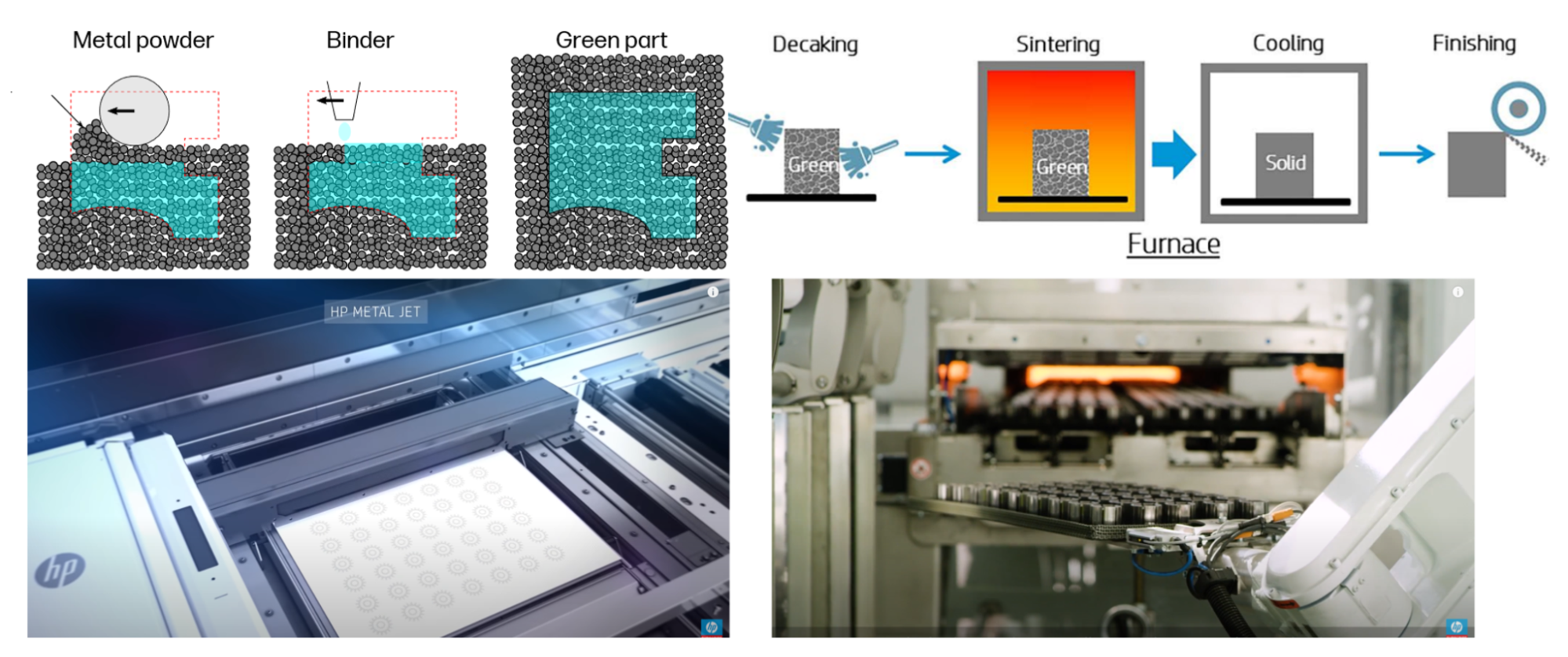
As a component of HP’s digital twin effort, the HP team developed the Virtual Foundry Graphnet model by applying physics-ML to significantly accelerate the computation that predicts the metal powder material phase transition. Such a trained surrogate model has achieved orders-of-magnitude speedups to enable near real-time, high-fidelity emulation of the metal sintering process.
Virtual Foundry Graphnet has also demonstrated the feasibility of such AI surrogate models to be applied to designs of diverse geometrical complexity and different process parameter configurations.
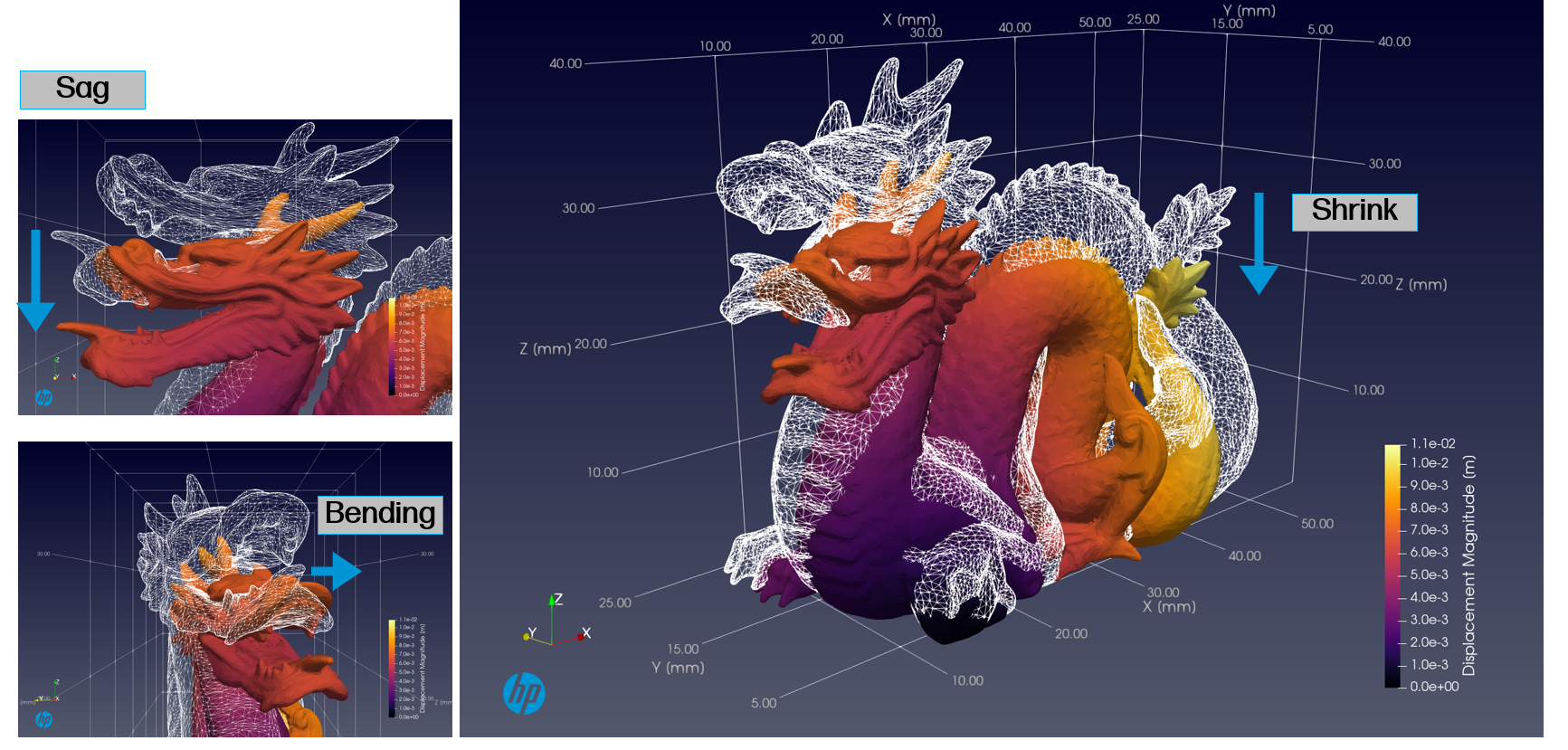
The Stanford dragon test model in Figure 2 highlights the need for simulation that can account for computational materials engineering and manufacturing process physics to accurately predict the geometrical distortion of the final part induced by manufacturing processes.
Physics-ML innovation at HP
Physics-ML and its applications to practical material engineering problems are still in the early stages of industrial applications. There is a need for more research to scale these approaches to various use cases.
The HP Digital Twin team believes in the significant role that the open-source community plays in accelerating the development of physics-ML and expanding its applications. NVIDIA Modulus provides an outstanding platform to aid and support such an open-source community. By open-sourcing Virtual Foundry Graphnet through the NVIDIA Modulus platform, HP 3D Printing has joined the physics-ML open-source community.
Traditional high-fidelity physics simulation workflows are computationally intensive, with one design iteration often taking hours to days to complete. Using low-fidelity, reduced-order models significantly limits design exploration. Physics-ML surrogate models offer high-fidelity emulation and complement numerical solvers to enable design iterations that are faster by orders of magnitude.
For example, instant feedback of a product design in terms of its manufacturability, and automated design screening through a large design space to optimize both function and yield are now possible with physics-ML surrogate models. The screened designs can be simulated in more detail using the numerical solvers. These AI models also enable product design teams to use their prior simulation database as a source of ground-truth data.
Today, different engineering departments carry out product design and product manufacturing. Product design optimizes for functional attributes while product manufacturing optimizes for yield. The final product design that optimizes for both requires multiple iterations between these two engineering departments, which can take many weeks to months. It is a significant bottleneck for new product introduction.
With physics-ML models such as Virtual Foundry Graphnet, engineers can carry out the function-yield co-design, and greatly accelerate time to market.
HP’s process physics simulation software, Digital Sintering, has been deployed to HP Metal Jet customers to improve manufacturing outcomes (Figure 3). Digital Sintering generates an improved design that compensates for the manufacturing process-induced part distortion.
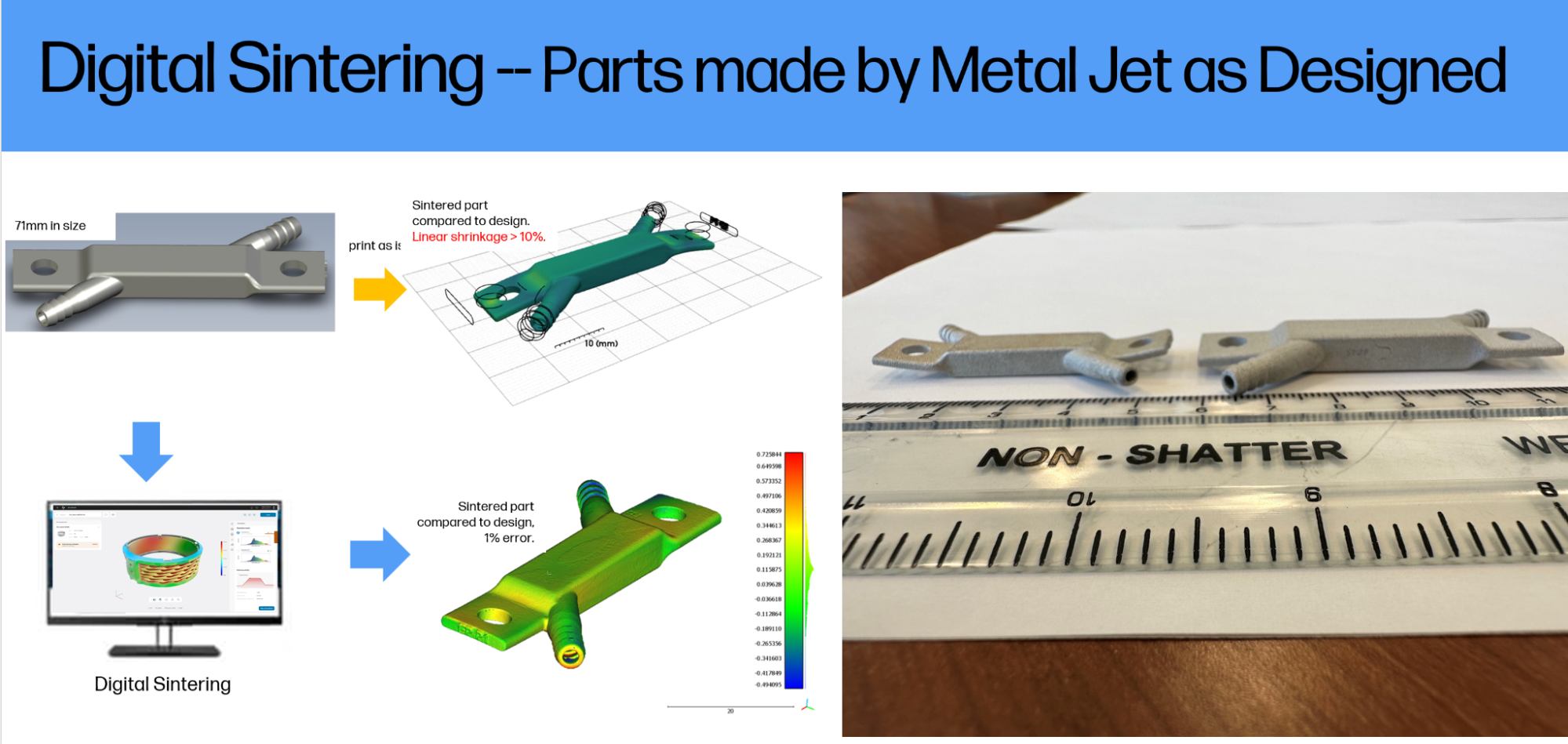
Running a well-trained metal sintering inferencing engine takes just seconds to obtain the final sintering deformation value. Figure 4 shows a 63 mm testing part with a maximum nodal error within 2%. The complete sintering cycle takes about 4 hours. The average difference between HP’s physics-ML prediction and that generated by physics simulation is 0.3 mm. For more information, see Virtual Foundry Graphnet for Metal Sintering Deformation Prediction.
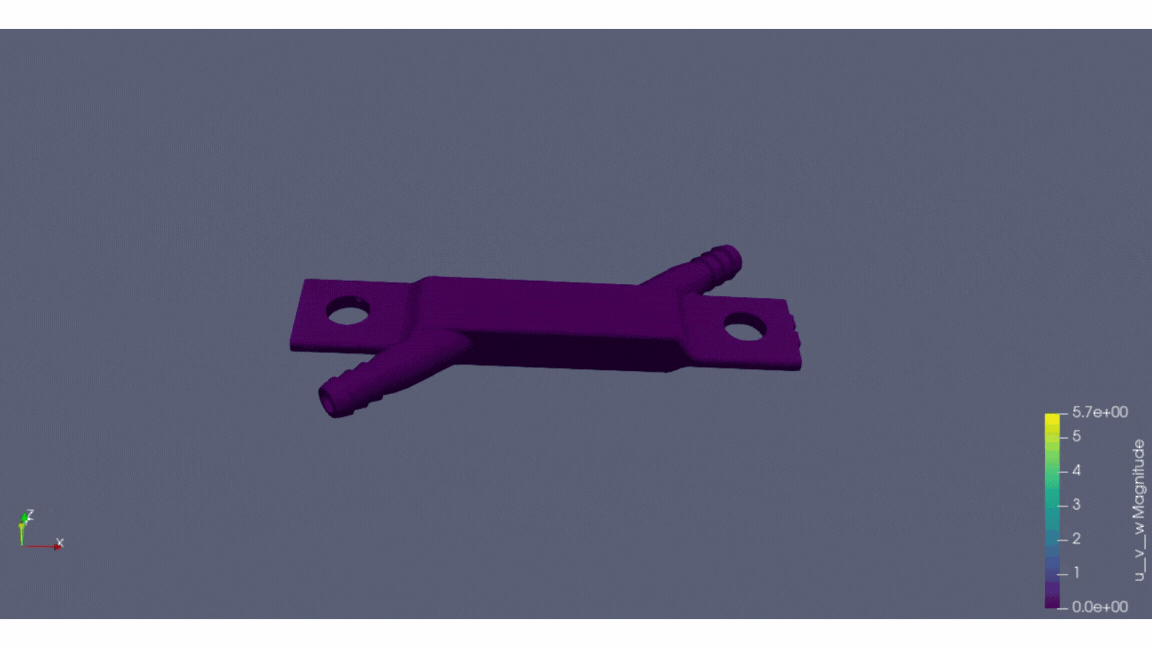
Empowering researchers to innovate and collaborate on AI for manufacturing
Physics-ML surrogate models are at the cutting edge of near-real-time simulation workflows. Physics-ML innovation at HP 3D Printing, such as Virtual Foundry Graphnet, demonstrates the power of AI to greatly accelerate the simulation workflows, delivering predictions of manufacturing process outcomes in seconds.
Democratizing AI for manufacturing is essential to empower a wider range of innovators to solve industry challenges and foster creativity in realizing the potential of digital twins.
AI researchers, including the HP 3D Printing team, use the NVIDIA Modulus open-source project to contribute and collaborate with domain experts, exchanging ideas and insights. Similarly, NVIDIA supports the physics-ML research community by providing an enterprise-grade platform that enhances collaboration and innovation. These efforts ensure that advanced AI tools and knowledge are accessible to all, promoting a more inclusive and dynamic manufacturing sector.
For more information, see the NVIDIA Deep Learning Institute course, Introduction to Physics-Informed Machine Learning with Modulus.
To try Modulus in your own environment, download the latest Modulus container or install the Modulus pip wheels.
To customize and contribute to the Modulus open-source framework, visit NVIDIA/modulus on GitHub.

